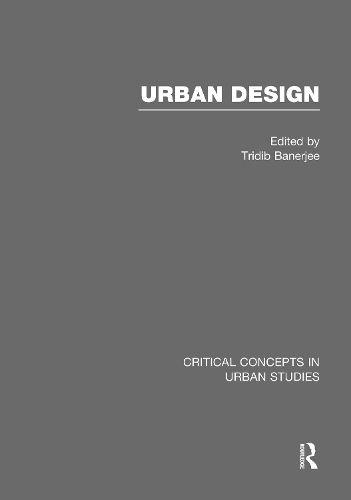Urban Design

Urban Design
From the earliest attempts to structure and organize human settlements in the image of divine, cosmic, or an ideal social order, the notion of urban design has deep historical roots. Down the ages, the design of cities has reflected edicts prescribed by the highest authorities, including priests, rulers, philosophers, and visionary thinkers. Many dynasties sought glory and fame in the design of their cities and-even in modern times-new cities have been designed and built as icons of independence and as symbols of progress. Thus, city design has played a crucial role in the construction of new capitals like Brasilia, Chandigarh, and Islamabad, and-more recently-in the dizzying new urban developments of Dubai and Shanghai.
In common parlance, urban design means the appearance, layout, and organization of the built form of large-scale urban environments. Urban design also implies a deliberate process to create functional, efficient, just, and aesthetically appealing urban spaces. Accordingly, as the editor of this new Routledge collection explains, ‘design’ is used simultaneously as both noun and verb, and the literature on urban design reflects this parallel possibility. As a noun, urban design is an object of historical, critical, comparative commentaries on the circumstances, values, and processes that lead to a particular urban design outcome and its human consequences. Scholarship here is critical and reflective of the past outcomes, and normative about future possibilities. The other literature that focuses on design as a process tends to emphasize the practice, methods, and the institutional frameworks that guide urban design and influence its outcome. While the former includes writings from social sciences and the humanities, the latter are drawn primarily from the disciplines of architecture, landscape architecture, and urban planning.
In the realm of practice, these three professions-architecture, landscape architecture, and urban planning-claim expertise and authority over the scope of urban design. While architects tend to focus on the design of the collective architectural forms of the built environment, landscape architects are apt to emphasize the form and processes of the natural environment, and nature more generally, in the design of large-scale built environments. Urban planners typically consider themselves responsible for defining the social, economic, and political imperatives of city design.
Although the professional identity of urban design by and large remains a shared enterprise, there is a growing sense that urban design has established an autonomous identity as body of knowledge. The scholarship pertaining to the appearance and design of cities, and the human consequences of the built environment has proliferated in recent years, not only within the professions but also in the disciplines of the social sciences, the humanities, and the environmental science and health fields. This scholarly enterprise includes critical, interpretive, and reflective work on the one hand, but also empirical findings about the nature of practice and human consequences of the built environment, on the other.
This new collection from Routledge’s Critical Concepts in Urban Studies series answers the urgent need for an authoritative reference work to help researchers and students navigate and make sense of this huge, rapidly growing, and complex corpus of literature. Moreover, the compilation reflects the many and varied sources of knowledge and influence: these expertly compiled major works chart, organize, and order not only the best output of academics and practitioners of urban design, but also include key writings on cities and urbanism from thinkers across the social sciences and humanities, and from other allied disciplinary traditions.
With a full index, together with a comprehensive introduction, newly written by the editor, which places the collected material in its historical and intellectual context, Urban Design is an essential work of reference. The collection will be particularly useful as an essential database allowing scattered and often fugitive material to be easily located. It will also facilitate rapid access to less familiar-and sometimes overlooked-texts. For researchers, students, practitioners, and policy-makers, it is an indispensable one-stop research and pedagogic resource.
This item is not currently in-stock. It can be ordered online and is expected to ship in 10-14 days
Our stock data is updated periodically, and availability may change throughout the day for in-demand items. Please call the relevant shop for the most current stock information. Prices are subject to change without notice.
Sign in or become a Readings Member to add this title to a wishlist.

